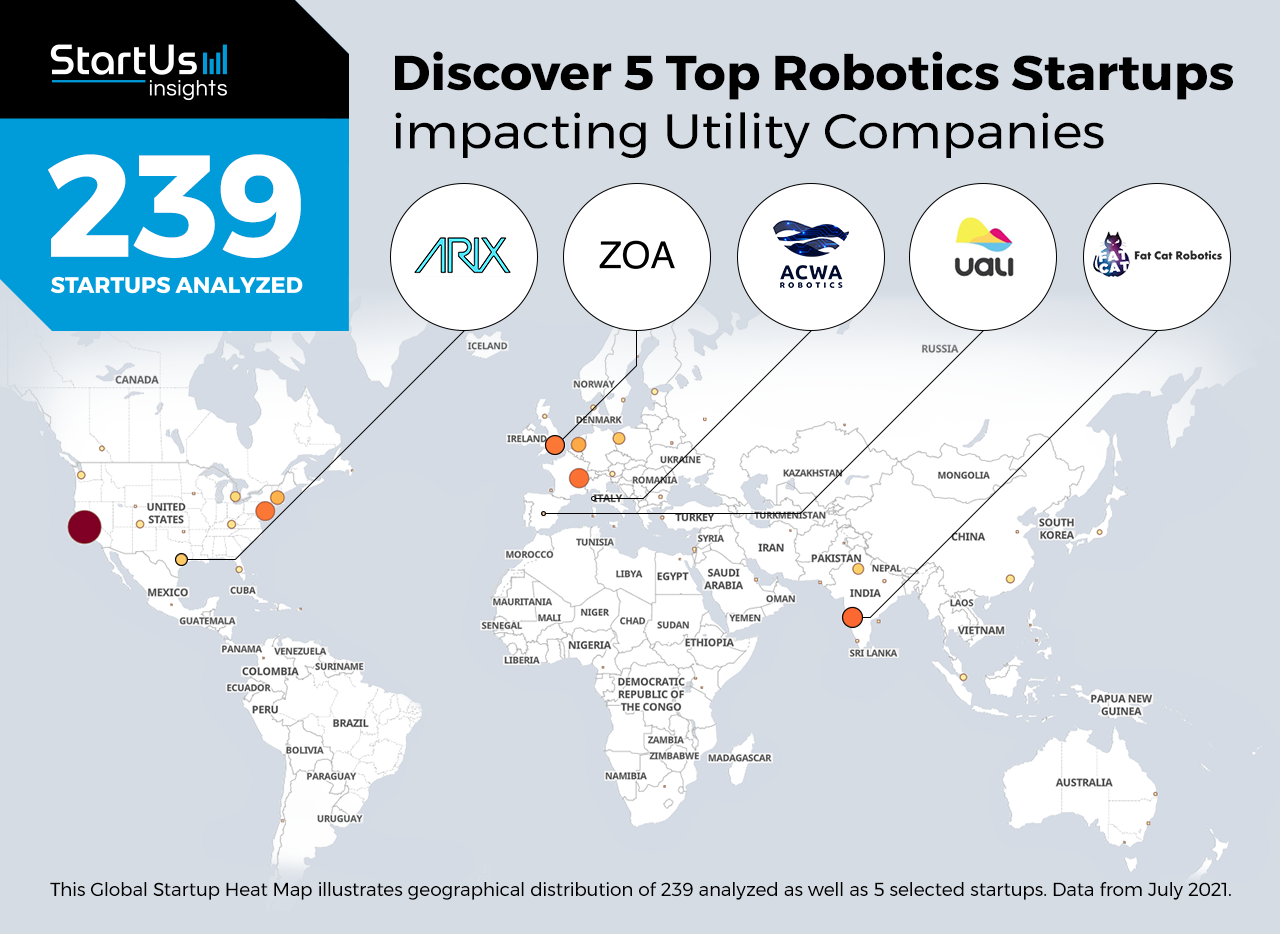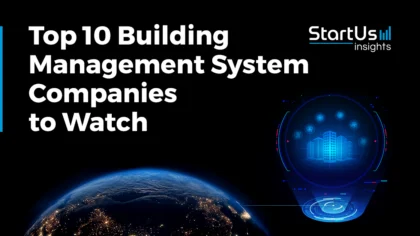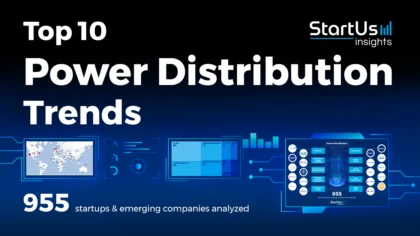Staying ahead of the technology curve means strengthening your competitive advantage. That is why we give you data-driven innovation insights for utilities. This time, you get to discover 5 hand-picked robotics startups.
Global Startup Heat Map highlights 5 Top Robotics Startups out of 239
The insights of this data-driven analysis are derived from the Big Data & Artificial Intelligence-powered StartUs Insights Discovery Platform, covering 2.093.000+ startups & scaleups globally. The platform gives you an exhaustive overview of emerging technologies & relevant startups within a specific field in just a few clicks.
The Global Startup Heat Map below reveals the distribution of the 239 exemplary startups & scaleups we analyzed for this research. Further, it highlights 5 robotics startups that we hand-picked based on criteria such as founding year, location, funding raised, and more. You get to explore the solutions of these 5 startups & scaleups in this report. For insights on the other 234 robotics startups, get in touch.

ARIX Technologies develops Crawling Robots for Oil Pipeline Inspection
Pipelines are majorly used as a safe mode to transport oil & gas as well as water resources for long distances. As most of the pipes are made of metals, there is a high chance of fire and leakage hazards due to pitting, cracks, or corrosion. The leakages pose dangerous and toxic effects to the environment. Thus, proper monitoring and inspection of the pipelines are necessary. As these pipes stretch several hundred kilometers, manual inspection is strenuous and unsafe. That is why startups develop robotic technology to provide real-time inspection data and insights on pipe maintenance.
US-based startup ARIX Technologies offers robotic solutions for oil and gas utilities. The startup develops pipe crawling robots for inspecting oil and gas pipelines. Additionally, ARIX also provides visualization software for users to view and manage corrosion in the pipes. The software enables users to schedule predictive maintenance to analyze the condition of the pipelines. This benefits the utilities to predict and prevent hazards and, thereby, saves billions of dollars.
Fat Cat Robotics creates an Autonomous Robot for Cleaning Solar Panels
The use of alternative energy sources like solar, wind, and hydrogen fuel has increased significantly in recent years. However, the vast infrastructure stretch of solar panels, for example, requires regular maintenance and monitoring. Moreover, the inclined and glass-made solar panel surface is difficult for humans to dust, clean, and maintain. Thus, the implementation of cleaning robots is an effective way to achieve proper maintenance. To address this, many startups are working on remotely-operated robotic technologies.
Indian startup Fat Cat Robotics specializes in developing cleaning robots for use in different industries. The startup’s Dustroyer is an autonomous robot for cleaning solar panels. The robot’s movement and cleaning cycles are customizable according to client needs. Dustroyer is efficient to tackle 10 mm vertical and 450 mm horizontal obstacles and cleans solar panels even at an inclination of 25 degrees. The robot is fully autonomous to initiate cleaning at a scheduled time, self-charging, and capable of monitoring solar farms. Dustroyer is controlled remotely via an interactive dashboard.
ZOA Robotics builds Fully Autonomous Site Inspection Robots
Regular site inspection and reposting are necessary to analyze processes in the energy, oil & gas, and construction industries. However, deploying human workers requires regular health assessments, transport, and safety precautions as exposure to dangerous conditions causes health issues and therefore has safety implications. Thus, robots act as artificial replacements to humans that provide real-time data from the site of monitoring.
UK startup ZOA Robotics provides site inspection robot solutions for hazardous oil & gas utility areas in remote locations. The startup’s quadruped robot Zeta is integrated with a range of sensors including ultrasound, thermal imaging, cameras, and gas sensors – fit to match the site requirements. The robots are suited to be left permanently on the utility site for teleoperated inspection. Additionally, the startup also provides a subscription to its versatile software, data analysis, and reporting provided by the robot.
Uali Drones provides Autonomous Drones to Monitor Energy Assets
Large energy assets such as oil reserves and plants require regular monitoring and operation maintenance to predict and avoid outages and equipment failure. Moreover, sites in remote locations and high altitudes are difficult to reach and monitor manually. Thus, robots aid in reaching and analyzing these sites to share data with the relevant stakeholders in real-time thanks to inbuilt sensors. To this end, startups are working on efficient systems including robotic drones to accomplish the same.
Spanish startup Uali Drones designs and manufactures autonomous drones. The startup’s drones are compatible for use in aerial, aquatic, and terrestrial terrains. Uali’s drones are powered by AI and deep learning technology to collect information for applications in predictive maintenance. The startup utilizes an Internet of Things (IoT) platform for data analysis and provides insights on the utility plant’s status.
ACWA Robotics builds a Robotic Solution to Optimize Water Distribution
The drinking water crisis intensifies globally due to multiple causes including population growth and global warming, among others. Thus the proper distribution and management of the available freshwater resource are pivotal. However, water distribution networks quite often employ fewer resources for maintenance resulting in regular leakages and water waste. To conserve the available clean water, efficient management through technical tools is necessary. Hence emerging companies are developing robots to monitor and prevent infrastructure damage and water loss.
French startup ACWA Robotics develops amphibious robotic devices for the management of clean water infrastructures. The startup’s robots move through pipes spanning thousands of kilometers to gather data on pipe conditions without interrupting the water flow. These robots collect detailed data on the condition of the systems and pinpoint the damaged sections which require repairs before leakage and water wastage occur. This efficiently saves the maintenance budget and conserves clean water.
Discover More Startups
Startups such as the examples highlighted in this report focus on electrification, connectivity as well as operational efficiency. While all of these technologies play a major role in advancing utilities, they only represent the tip of the iceberg. To explore more technologies, simply get in touch to let us look into your areas of interest. For a more general overview, you can download one of our free Industry Innovation Reports to save your time and improve strategic decision-making.








